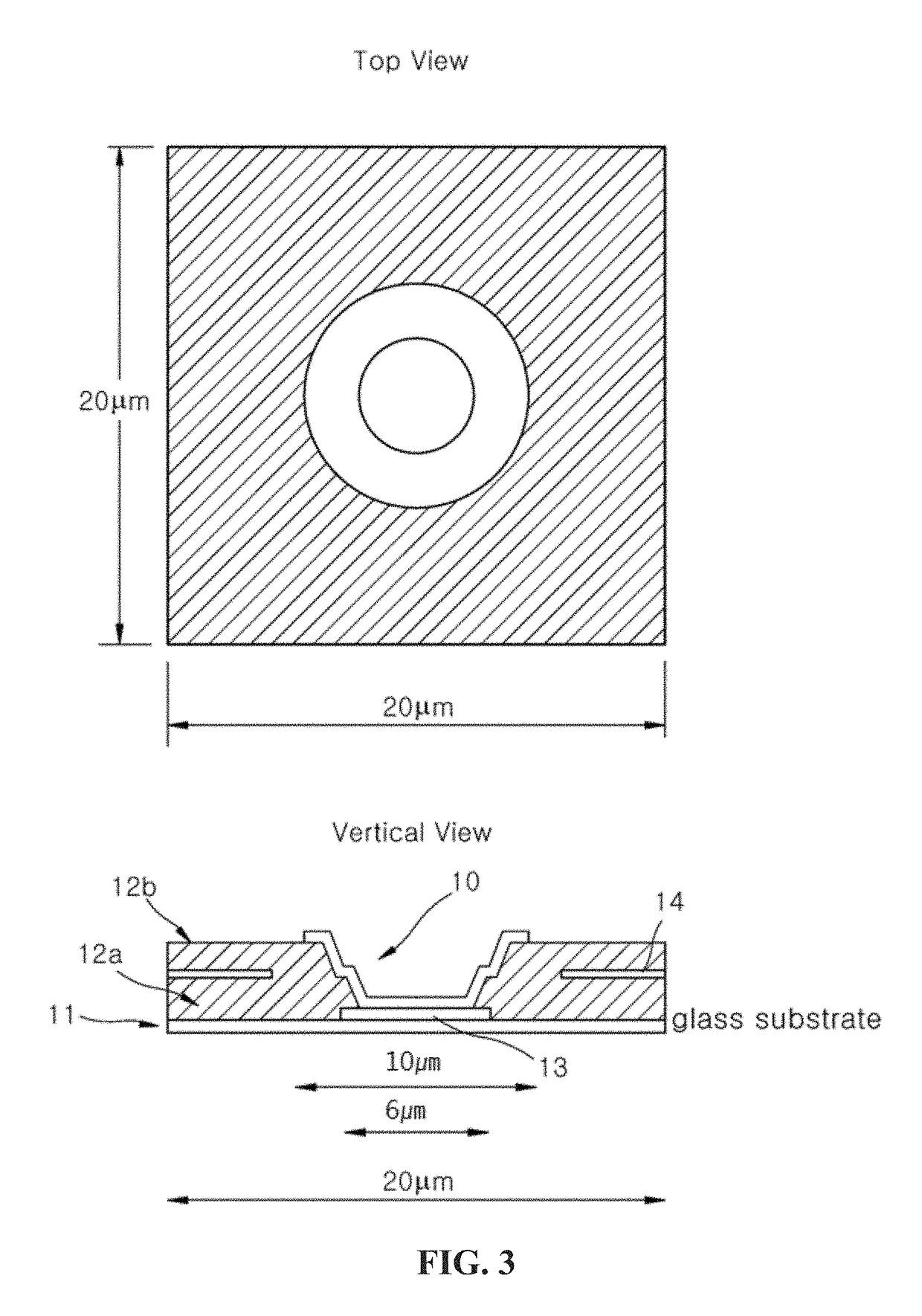Radiation imaging detector with proportional charge gain during readout
a radiation imaging and proportional charge gain technology, applied in the field of two-step image capture panel, can solve the problems of increasing image noise, reducing image dynamic range, and significant amount of dark curren
- Summary
- Abstract
- Description
- Claims
- Application Information
AI Technical Summary
Benefits of technology
Problems solved by technology
Method used
Image
Examples
example
[0031]In this example, a positive voltage of 1 KV over 200 μm of selenium was used resulting with an electric field of 5 volts per micron throughout most of the bulk of selenium layer. A potential of −50V was applied to the buried electrodes (14). As shown in FIG. 7, with the output data electrodes (13) connected to the charge amplifiers (9), the potential of the data electrodes was near zero volts range. A negative voltage of −50 volts was applied to the buried electrodes (14). With this distribution of potentials, all the electric field lines (20) starting from the top high voltage bias electrode terminated on the top surface of the third dielectric material (15) above the pixel buried electrodes (14). Upon exposure of x-ray radiation, electron-hole pairs were generated in the selenium layer proportional to the intensity of the radiation absorbed. Electrons were driven by the electric field to the top high voltage electrode (19) and holes were driven by the electric field (20) to ...
PUM
 Login to View More
Login to View More Abstract
Description
Claims
Application Information
 Login to View More
Login to View More - R&D
- Intellectual Property
- Life Sciences
- Materials
- Tech Scout
- Unparalleled Data Quality
- Higher Quality Content
- 60% Fewer Hallucinations
Browse by: Latest US Patents, China's latest patents, Technical Efficacy Thesaurus, Application Domain, Technology Topic, Popular Technical Reports.
© 2025 PatSnap. All rights reserved.Legal|Privacy policy|Modern Slavery Act Transparency Statement|Sitemap|About US| Contact US: help@patsnap.com



